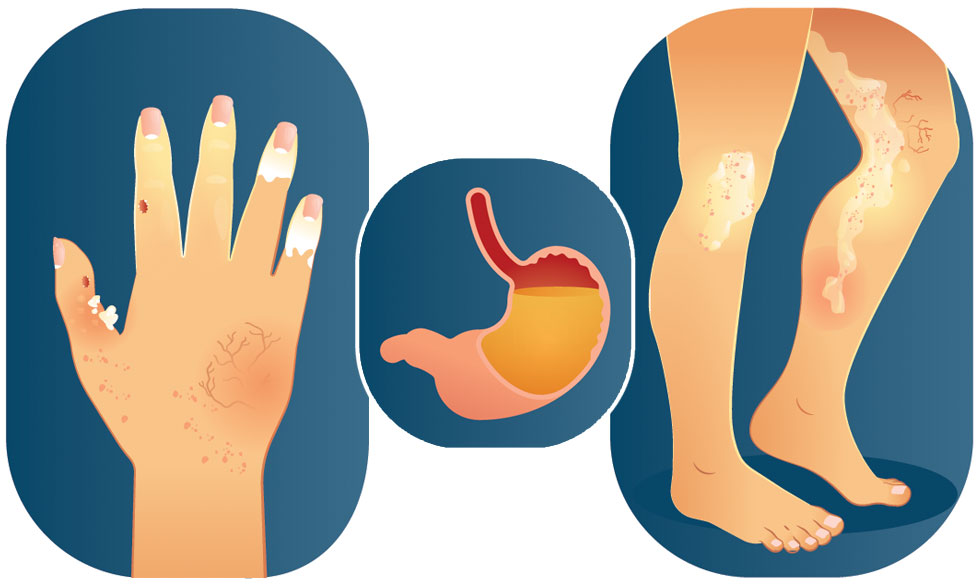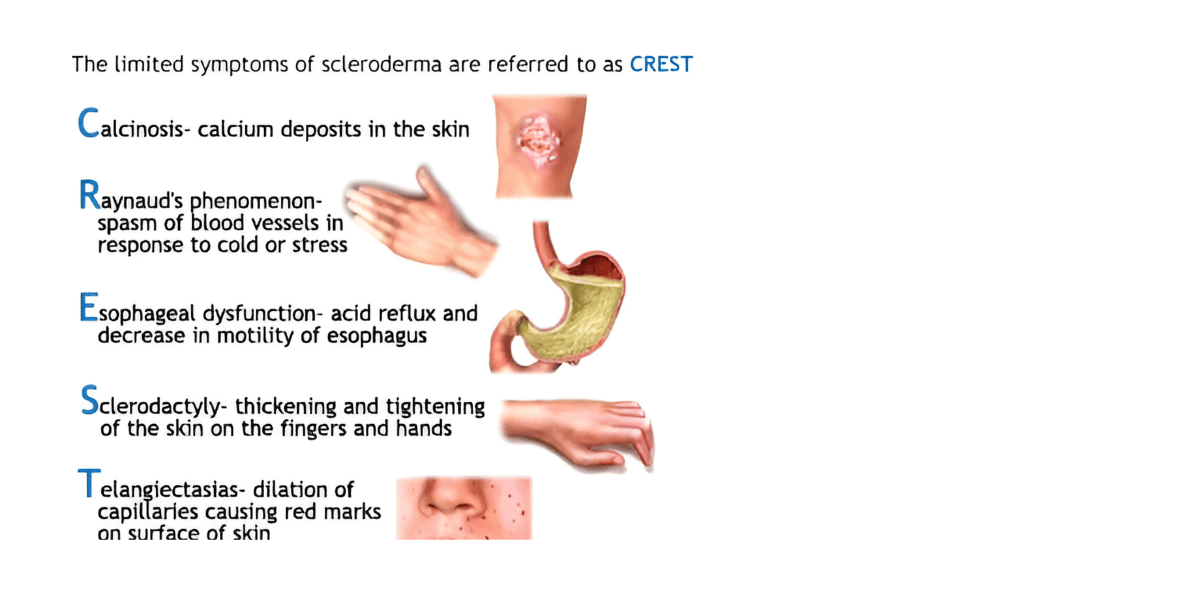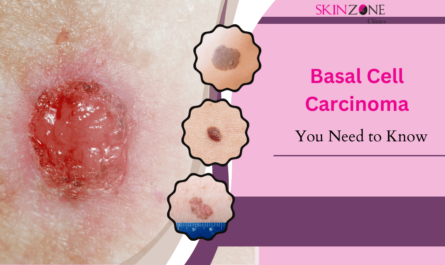Scleroderma, a chronic autoimmune condition, affects not just internal organs but also the skin, often leading to thickening, hardening, and tightness. For many, it becomes more than just a diagnosis; it’s a daily challenge. In recent years, advancements in dermatological care—such as laser toning and skin tightening—have brought new hope to those living with this complex condition. In this blog, we’ll explore what scleroderma is, its symptoms, and the latest treatments that can improve quality of life.
Understanding Scleroderma: What Is It?

Scleroderma, also known as systemic sclerosis, is a rare autoimmune disease characterized by the overproduction of collagen. This results in the thickening and tightening of the skin and can also affect internal organs such as the lungs, heart, and kidneys. There are two main types:
- Localized Scleroderma: Primarily affects the skin and sometimes underlying tissues.
- Systemic Scleroderma: A more severe form that involves internal organs and skin.
Key terms:
- Fibrosis: The thickening and scarring of connective tissue.
- Autoimmune: A condition where the immune system mistakenly attacks healthy tissue.
While scleroderma cannot be cured, early diagnosis and a multidisciplinary approach can help manage the condition effectively.
Causes, Symptoms, and Common Concerns
The exact cause of scleroderma is unknown, but it’s believed to be triggered by a combination of genetic and environmental factors. Women between the ages of 30 and 50 are more commonly affected than men.

Common Symptoms:
- Tight, hard skin on fingers, hands, and face
- Raynaud’s phenomenon (cold-induced color changes in fingers or toes)
- Joint pain or stiffness
- Digestive issues
- Shortness of breath (in systemic forms)
- Fatigue and poor circulation
- Swelling or puffiness in hands and feet
Emotional Impact: Aside from physical symptoms, patients often deal with emotional distress due to visible skin changes and chronic pain. Psychological support is crucial in holistic care.
Latest Advances in Dermatological Care
Modern dermatology has introduced several treatments that ease symptoms and improve skin flexibility:
- Topical Treatments
- Moisturizers and emollients to reduce dryness and improve elasticity
- Topical corticosteroids to manage inflammation in localized cases
- Laser Therapy
- Fractional laser and laser toning treatments help soften tight skin, reduce pigmentation, and promote collagen remodeling.
- Injectables
- Botox and dermal fillers can improve facial aesthetics, especially in cases of lip and facial tightening.
- Skin Boosters and IV Therapy
- Glutathione and vitamin C infusions can promote skin brightness and overall wellness.
- HIFU and Skin Tightening
- High-Intensity Focused Ultrasound (HIFU) can help tighten and rejuvenate affected skin.
- Platelet-Rich Plasma (PRP) Therapy
- Uses the patient’s own blood to promote skin healing and regeneration. It may help improve blood flow and texture.
- Phototherapy (UVB or UVA-1)
- Light-based therapy that helps soften thickened skin and reduce inflammation in localized cases.
- Microneedling with Radiofrequency (RF)
- A minimally invasive procedure that helps in collagen remodeling and enhancing skin elasticity.
- Cryotherapy
- Can be used to treat calcinosis cutis (calcium deposits under the skin) associated with scleroderma.
- Custom Skincare Plans
- Based on skin type and severity, dermatologists now offer AI-assisted diagnostic tools to create personalized regimens.
Expert Insights & Tips for Daily Living
- Hydration & Skincare Routine: Gentle, fragrance-free products are essential.
- Nutrition: Anti-inflammatory diets rich in antioxidants can support skin health.
- Sun Protection: Always use SPF to protect sensitive skin.
- Stress Management: Meditation, yoga, and counseling can significantly impact overall well-being.
- Regular Monitoring: Track new symptoms and seek regular follow-up with specialists.
- Use of Assistive Devices: Tools for gripping or compression gloves can help with hand stiffness.
Hospital Introduction
Skinzone Clinics in Borivali, Mumbai, is a trusted destination for advanced dermatology, aesthetic, and trichology treatments. We offer a well-rounded, evidence-based approach to skincare, combining proven technologies with personalized care. Our expert team is committed to long-term skin health, delivering transformative results through innovative procedures tailored to each individual. At Skinzone, every treatment is designed to enhance natural beauty while prioritizing safety, transparency, and effectiveness — making us a leading choice for those seeking holistic and lasting solutions.
Our Specializations Include:
- Medspa: HIFU, Microdermabrasion, Skin Polishing, Anti-Ageing, Medifacials, HydraFacial, Skin Tightening Laser, Laser Toning
- Botox & Fillers: Derma Fillers, Botox, Thread Lift, Facelift
- Skin & Hair Treatments: Acne, Scars, Vitiligo, Melanosis, Hair Loss, Dandruff, Alopecia Areata, Chemical Peels, Skin Boosters
- Laser Treatments: Laser Hair Removal, Laser Pigmentation, Fractional Laser
- IV Lounge: Glutathione, Vitamin C, Multi-Complex Vitamins
Consultation Details:
- Mumbai Clinic: Office No. 403, Vini Elegance, Above Tanishq Jewellers, L.T. Road, Borivali West, Mumbai – 400092
📞 +91 8657536730
📧 skinzoneclinics@gmail.com - Pune Clinic: Office No. 588, B3, 1st Floor Ganesh Market, Bibwewadi Kondhwa Rd, next to Spire Hospital, Pune – 411037
📞 +91 9766540054
📧 skinzoneclinics@gmail.com
FAQs
- Can scleroderma be completely cured? No, but with timely treatment and lifestyle management, symptoms can be controlled effectively.
- Is laser treatment safe for scleroderma patients? Yes, when done by qualified professionals, laser therapy is a safe option to improve skin texture and flexibility.
- What type of moisturizer is best for scleroderma? Use thick, fragrance-free moisturizers like petroleum jelly or urea-based creams.
- Can diet impact scleroderma symptoms? Yes, anti-inflammatory diets and hydration can positively influence skin health and inflammation.
- Are there treatments for facial changes due to scleroderma? Botox, fillers, and skin tightening treatments can offer aesthetic improvements.
- What role does physiotherapy play in scleroderma? Physiotherapy helps maintain joint mobility and prevents stiffness in skin and muscles.
- How often should I consult a dermatologist? Ideally, every 3-6 months depending on the severity and treatment plan.
- Is emotional support important in managing scleroderma? Absolutely. Psychological care is vital to cope with chronic illness and improve overall quality of life.
- Are new technologies like PRP and microneedling effective for scleroderma? Yes, many patients experience improved skin texture and flexibility with these advanced treatments.
Conclusion
Living with scleroderma poses challenges, but with today’s dermatological advancements, managing this condition is more achievable than ever. From laser therapy to PRP and microneedling, there are a range of options to improve skin appearance and comfort. Seeking expert care, like that at Skinzone Clinics, can make all the difference. Don’t hesitate to consult a specialist—because better skin health starts with informed choices and proactive care.


